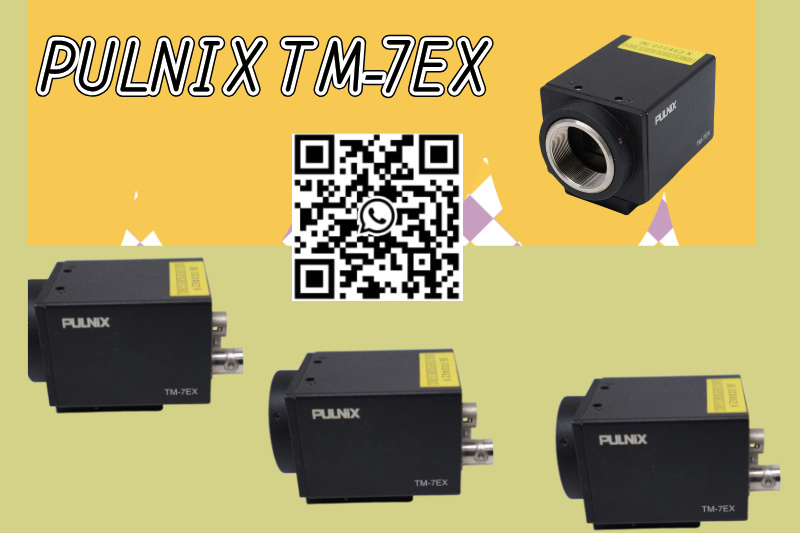Introduction Ithe PULNIX TM-7EX has long stood as a notable example of a compact, high-performance CCD camera, setting a benchmark for its class in industrial imaging. Introduced by Pulnix America, Inc., this monochrome camera gained significant traction due to its blend of sensitivity, resolution, and adaptability, contributing to its enduring impact. This article will delve into the core technical specifications that define the PULNIX TM-7EX, explore its widespread applications in machine vision, and discuss its legacy in the evolving landscape of industrial imaging. Technical Prowess and Core Technical Specifications of the PULNIX TM-7EX The enduring appeal of the PULNIX TM-7EX lies in its robust technical specifications and thoughtful design, tailored for demanding industrial imaging environments. At its heart, the TM-7EX utilizes a high-quality interline transfer CCD sensor, which is fundamental to its imaging capabilities. This CCD camera typically provides a resolution suitable for precise measurement and inspection tasks, often around 640x480 pixels (VGA), a standard resolution for many legacy machine vision systems. A key feature is its monochrome output, which, while lacking color information, excels in light sensitivity and detail resolution for intensity-based analysis, enabling greater accuracy. This makes it ideal for tasks where subtle differences in texture, defects, or object presence need to be detected without the added complexity of color processing, enhancing quality control. The camera's progressive scan output is another critical advantage, allowing for the capture of full frames without interlace artifacts, which is crucial for capturing fast-moving objects accurately in machine vision applications. |
The versatility and reliability of the PULNIX TM-7EX have led to its adoption across a remarkably diverse range of industrial and scientific applications. In manufacturing, it was extensively used for automated optical inspection (AOI) to detect flaws on circuit boards, verify component placement, and ensure the quality control of manufactured goods. Its ability to capture clear, distortion-free images was invaluable for metrology applications, where precise dimensional measurements of parts were critical.
Beyond manufacturing, the PULNIX TM-7EX found its niche in robotics for guidance and pick-and-place operations, where its compact size and accurate imaging facilitated efficient automation. In security and surveillance, particularly in specialized setups requiring high sensitivity in low light or specific spectral ranges, its monochrome output offered advantages. Scientific research, including microscopy and laboratory automation, also benefited from its consistent image quality for data acquisition. Even today, despite the advent of newer technologies like CMOS sensors, the PULNEX TM-7EX continues to be found in legacy systems where its established performance and compatibility with existing infrastructure are highly valued. Its robust build quality means many units are still operational, demonstrating an impressive longevity and enduring impact in a rapidly evolving technological landscape of machine vision and industrial imaging.
Conclusion
MPULNIX TM-7EX PULNIX TM-7EX PULNIX TM-7EX PULNIX TM-7EX PULNIX TM-7EX PULNIX TM-7EX Industrial Imaging Industrial Imaging Industrial Imaging Industrial Imaging Industrial Imaging Machine Vision Machine Vision Machine Vision Machine Vision Machine Vision Machine Vision Technical Specifications Technical Specifications Technical Specifications Technical Specifications Technical Specifications Technical Specifications CCD Camera CCD Camera CCD Camera CCD Camera CCD Camera CCD Camera CCD Camera CCD Camera CCD Camera CCD Camera CCD Camera CCD Camera CCD Camera CCD Camera CCD Camera Machine Vision
If you want to more details,please contact me without hesitate.Email:sales@sparecenter.com



